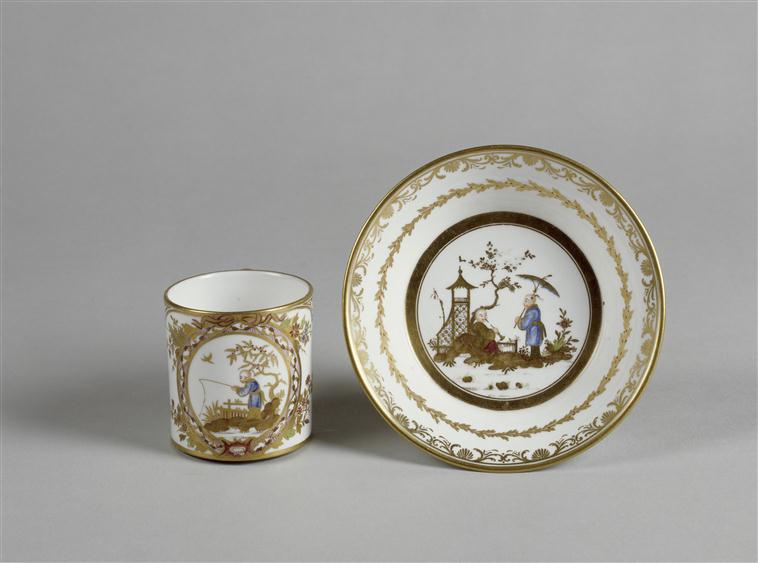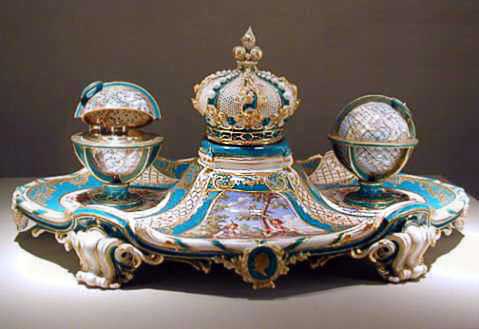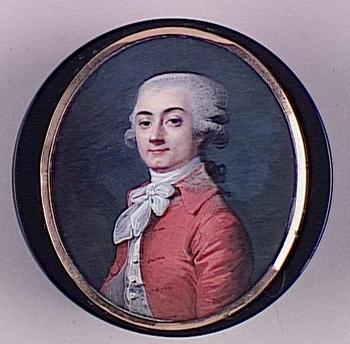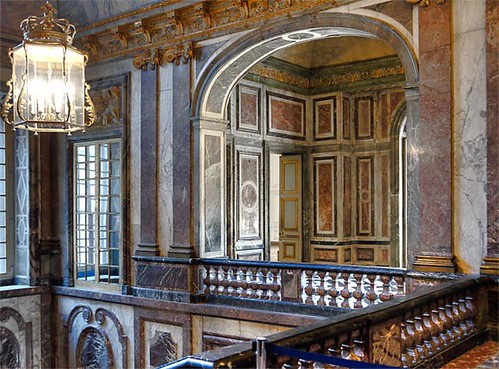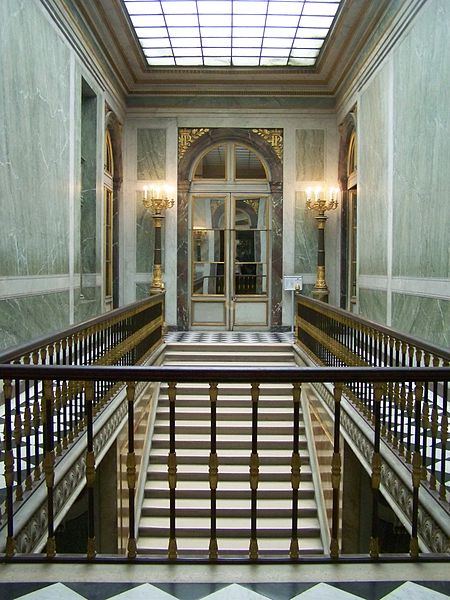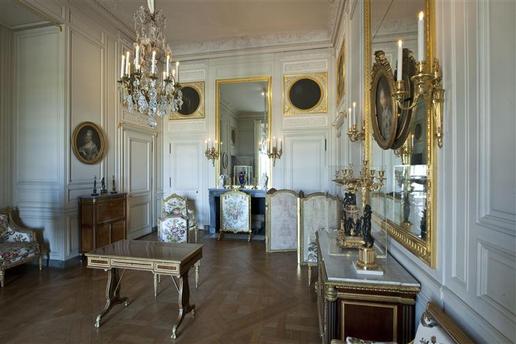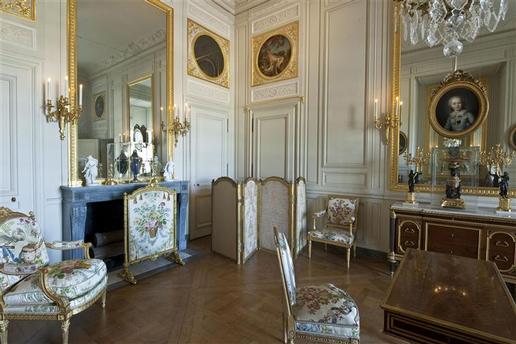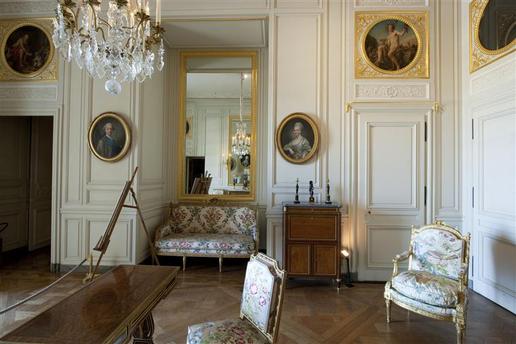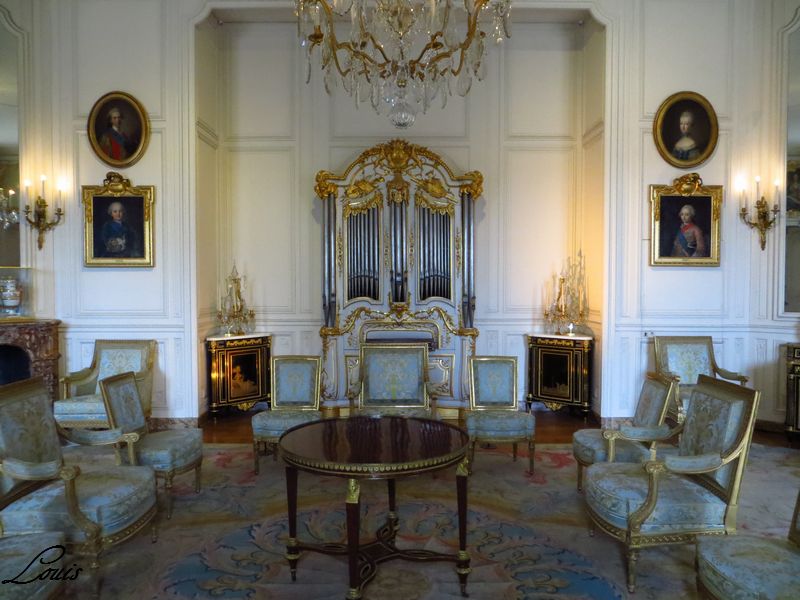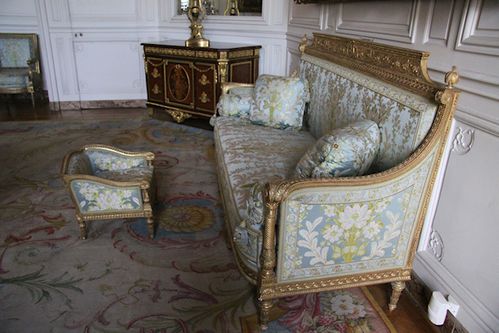Not many of the ladies from the older aristocracy were pleased with the ascension of Madame du Barry as Louis XV's new mistress. To most she was another bourgeoisie who took a place which was traditionally held by the upper class.
The dispute between Madame du Barry and the Comtesse de Gramont took form in August 1770 when the court was sojourning at Compiègne. Here, the theatre was not large enough to hold the number of ladies who chose to follow the King there so most came at an early time. Due to the King's affection for her seats had been reserved for Madame du Barry and her friends. With the limited number of seats some ladies were not contented to stand and took those seats. When Madame du Barry arrived with the Duchesse de Mirepoix and the Comtesse de Valentinois - her friends - the group were met with haughty looks.
The Comtesse de Gramont was the leader amongst the ladies who had occupied the seats and did nothing to hide her contempt for the new favourite. In deep mortification Madame du Barry had to retreat to the sounds of the insults hurled after her.
Naturally, Madame du Barry knew how to use her access to the King. She consequently went to her lover and complained of the humiliation she had suffered - and she certainly got what she wanted. The King was furious at this disrespect and had the Comtesse de Gramont exiled from court to her estate of Chanteloup. News of the exile spread like wildfire - as such things do - but most thought that the Comtesse was right to turn her back to the new mistress. The Marquise de Deffand mentioned the exile in a letter to Horace Walpole.The court was outraged at the verdict since the Comtesse de Gramont was definitely not without connections.
 |
| Chàteau de Chanteloup where the Comtesse spent the first months of her exile. Today, it is all but ready to crumble. |
She was not only the relative of the Duchesse de Gramont (sister to powerful minister the Duc de Choiseul) and a dame du palais to the newly arrived Dauphine, Marie Antoinette.
After lingering two months in her country estate the disgraced Comtesse pleaded with her mistress to intercede with the King on her behalf. The Comtesse complained that her exile had had such an effect on her health that it was vital for her to return at least to the capitol. This was a rather awkward position for the Dauphine whose marriage was unconsummated and as such still in peril. Nevertheless, according to the Austrian ambassador, Comte de Mercy-Argenteau, she acquitted herself well - although since the ambassador himself advised her on how to act it is natural that he would think so.
Louis XV would first make sure that the Comtesse was in actual danger and sent a dispatch to observe her. The messenger returned with a signed doctor's certificate and the King felt obliged to act.
The King was not prepared to let the Comtesse back just yet but he was somewhat softened by the pleas of the young girl. Rather than a complete recall to court the Comtesse was allowed to return to Paris but was strictly prohibited from appearing at court. The expansion of her area of exile was communicated to the Comtesse on 28 October 1770. Madame du Barry had not been informed of the scheme and was deeply angered by it when she heard the news. Although the Comtesse was not allowed to return to court it was a significant victory for the Choiseul-party; they wasted no time in rushing to the Dauphine and thanking her profusely for her aid.
It was not until 1773 - a whole three years later - that the Comtesse de Gramont was finally able to reappear at Versailles. The exile had had another impact on life at court. Madame du Barry became the out-right enemy of Marie Antoinette; although their relationship had not been good then it was not until this affair that it developed into downright enmity.



